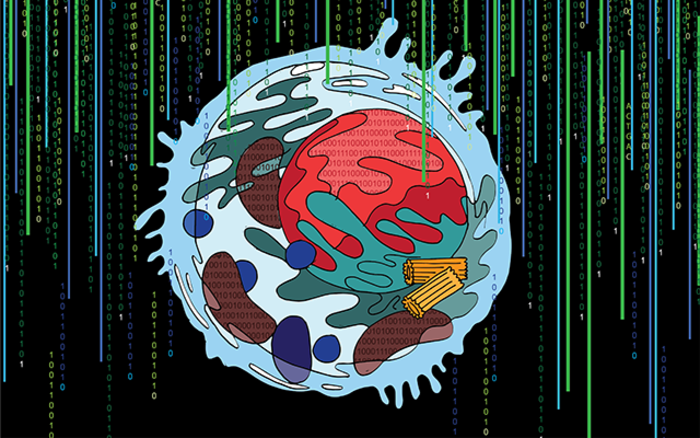The structure of the cell, and its components, have largely been explored through methods such as protein fluorescent imaging and protein biophysical association. Now, researchers have combined microscopy, biochemistry, and artificial intelligence techniques to advance the understanding of the cell by revealing previously unknown cell components. The researchers integrated immunofluorescence images in the Human Protein Atlas with affinity purifications in BioPlex to create a unified hierarchical map of human cell architecture. In doing so, they have taken what they think may turn out to be a significant leap forward in the understanding of human cells.
The method the researchers used, known as Multi-Scale Integrated Cell (MuSIC), is described in Nature, in the paper, “A multi-scale map of cell structure fusing protein images and interactions.”
“If you imagine a cell, you probably picture the colorful diagram in your cell biology textbook, with mitochondria, endoplasmic reticulum, and nucleus. But is that the whole story? Definitely not,” said Trey Ideker, PhD, professor at UC San Diego School of Medicine and Moores Cancer Center. “Scientists have long realized there’s more that we don’t know than we know, but now we finally have a way to look deeper.”
The newly developed map, known as the multi-scale integrated cell (MuSIC 1.0), resolves 69 subcellular systems contained within a human kidney cell line, of which approximately half had not been seen before. In one example, the map revealed a pre-ribosomal RNA processing assembly and accessory factors, which the researchers showed govern rRNA maturation, and functional roles for SRRM1 and FAM120C in chromatin and RPS3A in splicing.

“The combination of these technologies is unique and powerful because it’s the first time measurements at vastly different scales have been brought together,” said Yue Qin, a graduate student in the Ideker lab.
Microscopes allow scientists to see down to the level of a single micron, about the size of some organelles, such as mitochondria. Biochemistry techniques, which start with a single protein, allow scientists to get down to the nanometer scale. “But how do you bridge that gap from nanometer to micron scale? That has long been a big hurdle in the biological sciences,” said Ideker. “Turns out you can do it with artificial intelligence—looking at data from multiple sources and asking the system to assemble it into a model of a cell.”
The team trained the MuSIC artificial intelligence platform to look at all the data and construct a model of the cell. The system doesn’t yet map the cell contents to specific locations, like a textbook diagram, in part because their locations aren’t necessarily fixed. Instead, component locations are fluid and change depending on cell type and situation.
Ideker noted this was a pilot study to test MuSIC. They’ve only looked at 661 proteins and one cell type. “The clear next step is to blow through the entire human cell,” Ideker said, “and then move to different cell types, people, and species. Eventually, we might be able to better understand the molecular basis of many diseases by comparing what’s different between healthy and diseased cells.”



